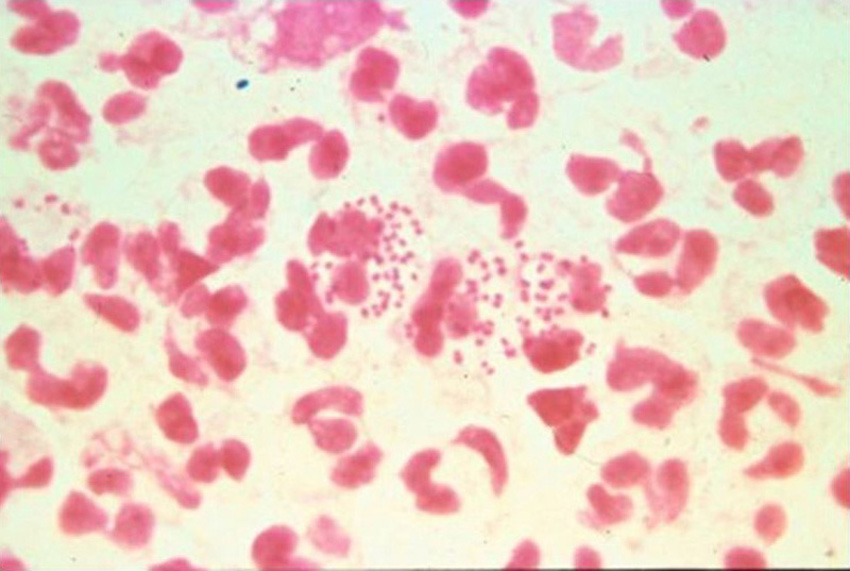Ontario’s rising gonorrhea rate is driven almost entirely by an increase in cases among men, data shows.

Data on five years of sexually transmitted disease diagnoses were released to Global News under access-to-information laws.
From 2011 to 2015, gonorrhea rates rose much faster than other STIs – 41 per cent over the five-year period, as opposed to chlamydia (seven per cent) or syphilis (28 per cent). HIV diagnoses fell by 16 per cent.
In 2011, men and women were diagnosed with gonorrhea in roughly equal numbers. The rates started to diverge at that point – while rates among women stayed much the same, rates among men rose by 69 per cent in five years, accounting for nearly all the overall increase.
The data implies that gonorrhea started to spread among gay men in about 2014 in Ontario, while staying at stable levels in straight populations.
The province’s four highest postal codes for gonorrhea are side-by-side in Toronto’s east downtown.
About half of the people diagnosed with gonorrhea reported that they hadn’t used a condom – it was the most common risk factor cited for both men and women. (A majority of both men and women diagnosed with gonorrhea reported no condom use.)
“There are an awful lot of people asking for condom-free activities of one sort or another,” says Toronto journalist Bert Archer, who is active on Grindr, a hookup app for gay men. (The equivalent for straight people is Tinder.)
“The appeal is what you would expect the appeal to be – it feels better. You can be more spontaneous. A lot of guys lose their erections with condoms.”
A rise in popular hookup apps roughly coincided with a rise in some STIs, and the connection between the two has been debated.
READ MORE: Reality check: Do hook-up apps lead to increased STI rates?
“Obviously the hookup apps are fairly spontaneous, the location-based ones, and that can certainly contribute to a lot of anonymous sex, but sometimes unprotected sex, condomless sex as well,” says Jane Greer, director of the Hassle-Free Clinic, a sexual health clinic in central Toronto. “They play a role, but I couldn’t speak to it with evidence to back it up.”
Archer sees Grindr as having revived a version of the bathhouse culture of the 1970s, for gay men.
“What an app is, is a bathhouse times a thousand.”
“You can have sex several times a day, if you want. There’s always something going on – someone looking for what you’ve got.”
There is at least some awareness of STIs on Grindr, Archer says.
“You will, every now and again, see ‘Negative as of April 2, 2016’ that sort of thing. But of course you don’t know. They’re saying that. Mostly you don’t get asked, either. It doesn’t come up in your little profile, and it doesn’t come up when you meet.”
“People have always found ways to hook up, regardless of whether there’s an app for that or not,” Greer says.
Why does Toronto’s east downtown have such high gonorrhea rates?
Gonorrhea is easily treated with modern drugs, but STI experts are uneasy about the future, as dangerous drug-resistant strains start to emerge. There are no new drugs to treat gonorrhea if the current ones stop working, they warn.
“Historically, it’s been a bit of a nuisance disease,” explains Vanessa Allen of Public Health Ontario. “You get it, it’s uncomfortable, then you get treated and it’s gone. There will be a point in the near future when we don’t even have drugs to treat it, and then it’s beyond nuisance.”
READ MORE: Drug-resistant gonorrhea on the rise
“It’s interesting that men are so unworried about any sexual health issue,” Archer reflects.
“Men really don’t worry about it. HIV was the one big thing, we’ve kind of got that licked, and for gonorrhea, for chlamydia, for anything else, you take a pill. But these were once serious illnesses, and could be again.”

Rates of sexually-transmitted infections in Alberta are the highest they’ve been in decades. In fact, Alberta Health has declared them to be at “outbreak levels.” Su-Ling Goh has more on the recent surge in STIs and why the numbers are rising.


Comments